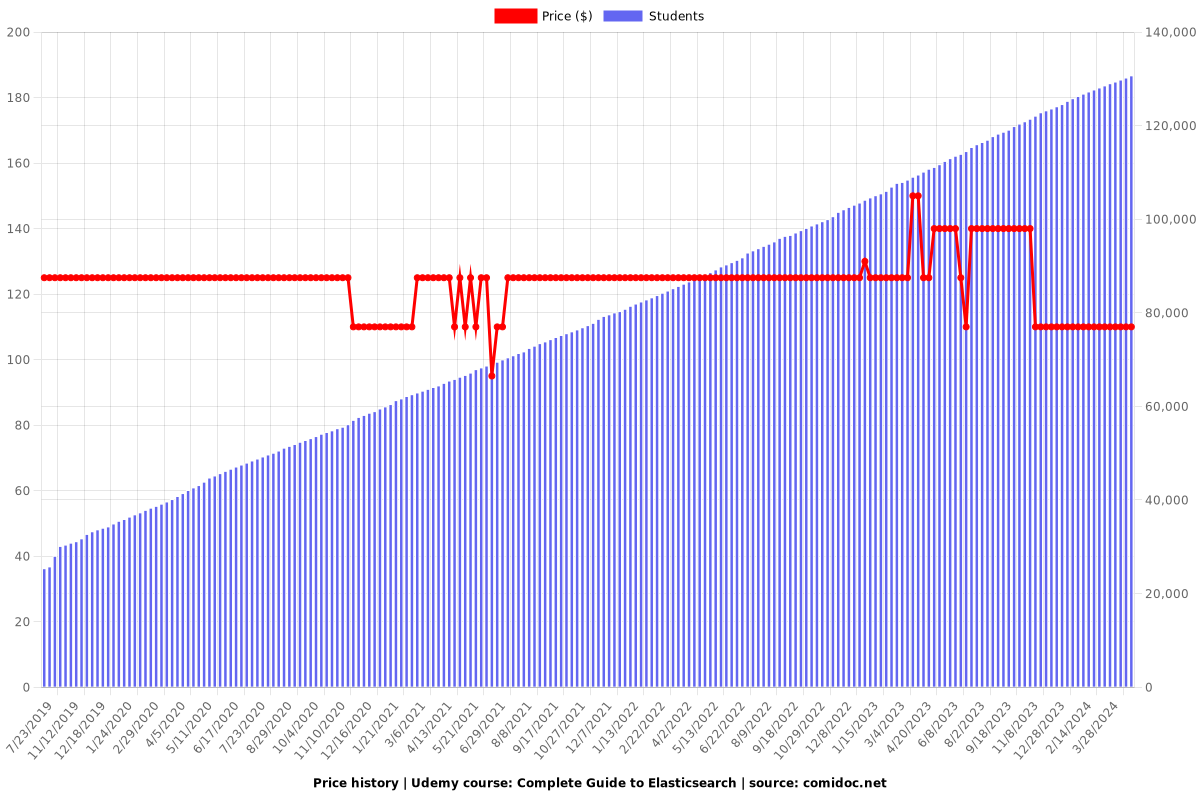Complete Guide to Elasticsearch
Learn Elasticsearch from scratch and begin learning the ELK stack (Elasticsearch, Logstash & Kibana) and Elastic Stack.

What you will learn
How to build a powerful search engine with Elasticsearch
The theory of Elasticsearch and how it works under-the-hood
Write complex search queries
Be proficient with the concepts and terminology of Elasticsearch
Why take this course?
Do you want to learn Elasticsearch from the beginning and become a professional in no time? This course is an excellent way for you to quickly learn Elasticsearch and to put your knowledge to work in just a few hours! This online course is the most comprehensive Elasticsearch tutorial that you will find anywhere! It is a great starting point for anyone who wants to learn the Elastic Stack and ELK stack, as Elasticsearch is at the center of both stacks.
Elasticsearch is an extremely popular search engine and will be an excellent addition to your CV - even if you are already familiar with other search engines or frameworks such as Apache Lucene, Apache Solr, Algolia, etc.
This Elasticsearch course is a combination of theory and learning by doing. Before giving examples of how to perform certain queries, you will have been equipped with the necessary theory in advance. This ensures that you not only know how to write powerful Elasticsearch queries, but that you also understand the relevant theory. Throughout this tutorial, you will get a deep understanding of how Elasticsearch works under the hood.
The course starts from the absolute beginning, and no knowledge or prior experience with Elasticsearch is required. We will walk through all of the most important aspects of Elasticsearch. After completing this course, you will be able to utilize Elasticsearch for a number of use cases and purposes, such as:
Building a full text search engine (e.g. similar to Google Search)
Data analytics for large amounts of data with aggregations
Using Elasticsearch as a time series database (TSDB)
... and much more!
Combined with other products in the Elastic Stack, such as Logstash or Kibana, you will unlock several other features, such as:
Log management and log analysis
Observability (including server/service monitoring and APM (Application Performance Monitoring))
Data visualization and reporting
Security analysis (SIEM)
... and much more!
* These features are not specifically covered in this course. Some of them are covered in my Logstash and Kibana courses.
So, join me in this online course and learn how to build amazing things with Elasticsearch!
Please note that this course is intended for developers who want to interact with an Elasticsearch cluster in one way or another and not system administrators looking to maintain an Elasticsearch cluster in production. The course focuses on functionality relevant to utilize the capabilities of Elasticsearch as a developer. It also covers Elasticsearch in favor of OpenSearch, but most of the core features are identical or similar. So even if you wish to learn OpenSearch, this course should still be a good starting point.
Note that this course does not cover Logstash and Kibana. This is so that I can go into much greater detail with Elasticsearch and focus on that exclusively. This course is therefore dedicated to Elasticsearch. For courses on Logstash and Kibana, please see my other courses.
Content
Introduction
Getting Started
Managing Documents
Mapping
Analysis & Analyzers
Introduction to Searching
Term Level Queries
Full Text Queries
Adding Boolean Logic to Queries
Joining Queries
Controlling Query Results
Aggregations
Improving Search Results
Building a Web Application Search Engine
Conclusion
Screenshots




Our review
Coupons
| Submit by | Date | Coupon Code | Discount | Emitted/Used | Status |
|---|---|---|---|---|---|
| - | 12/7/2021 | CEPROMO202112 | 83% OFF | expired | |
| - | 1/8/2023 | CEPROMO202301 | 84% OFF | expired |
Charts
Price

Rating

Enrollment distribution
